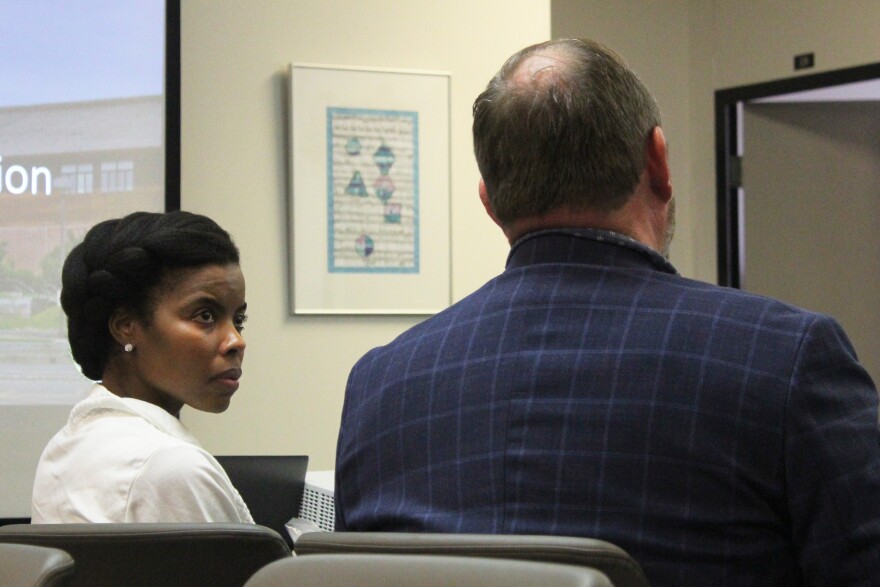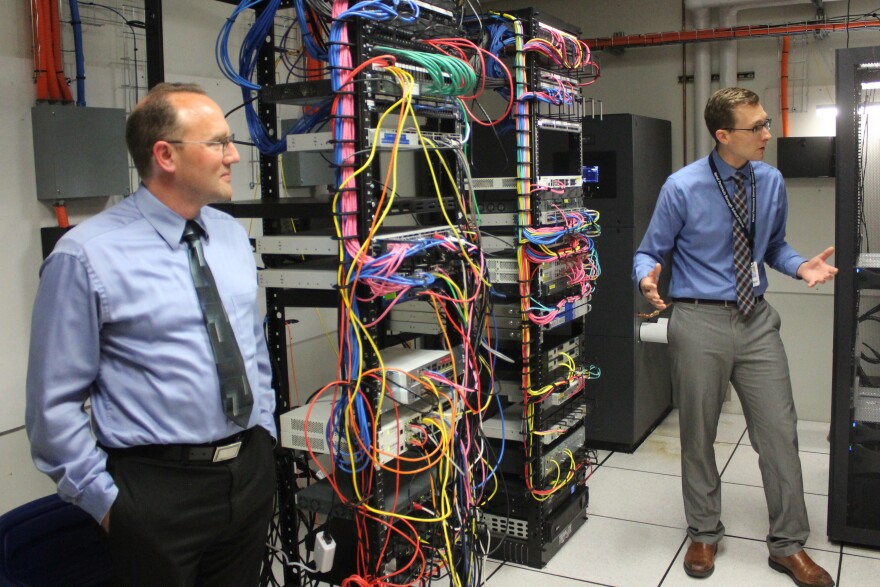On a Wednesday afternoon in late August, Olivia Trusty and Sen. Lisa Murkowski stood in a tiny room full of computer servers on the bottom floor of the Kenai Peninsula Borough building. A cascade of colored wires spilled out from the towers, and the whirring of fans drowned out conversation.

Murkowski and Trusty were visiting from Washington, D.C. to learn more about how a federal broadband access program impacts one of Alaska’s most diverse school districts.
Earlier this year, Trusty was appointed as a commissioner to the Federal Communications Commission, the federal agency that regulates radio, television and other types of interstate communications. The FCC also supervises administration of a program called E-Rate, which helps schools and libraries get affordable broadband.
“E-Rate is huge for the state of Alaska and our rural communities,” said Clayton Holland, the superintendent of the Kenai Peninsula Borough School District.
The district serves more than 8,000 students in 42 schools spread across a geographic area larger than West Virginia. There are traditional big schools on the road system, small schools, and K-12 schools – some of which can only be accessed by boat or plane.
According to the school district’s Director of Information Services Eric Soderquist, the cost of providing internet to students varies depending on where those students go to school. To cover every part of the peninsula, the district uses four telecommunication providers. That’s where Soderquist says E-Rate is especially helpful.
“We aren’t required to use fiberoptic, we aren’t required to use fixed wireless,” he said. “There is that band of flexibility, within guardrails, to understand that if it meets our needs in a community, to go with option A versus option B.”

The data center Murkowski and Trusty toured is a sort-of nerve center for the school district. It complements school-based servers by enabling the district to offer services more efficiently at one location instead of having to duplicate services at every site.
E-Rate helps pay for the network links that connect schools back to the data center. It’s how schools can access core services hosted by the district, like student records and email. On top of saving money, consolidating to a single data center is more secure because it ensures there’s only one entrance point to the district’s network.
For the current fiscal year, which started July 1, the district plans to receive about $700,000 through the federal E-Rate program. That money can be used to subsidize eligible telecommunication expenses, up to 70%. The district has participated in the program since it was established in 1998. In that time, the district has received $15.8 million dollars.
Trusty says the FCC chairman has shown a special interest in beefing up the use of E-Rate for cybersecurity.

Last year, KPBSD was targeted as part of a nationwide data breach. But Soderquist says the district wasn’t impacted – in part because of firewall hardware that’s funded by the E-Rate program.
Murkoswki said she thought Trusty should visit the Kenai Peninsula Borough School District because the area is like a microcosm of Alaska. Showing how the program is leveraged in diverse communities she said, underscores its value.
“The level of support that comes on the federal side is not only welcome, but probably critical,” she said.
Holland agreed. It’s been a financially tumultuous year for the district, which grappled with a $17 million budget shortfall, federal funding freezes, ongoing uncertainty about state education funding, inflation and the high cost of doing business in remote communities.
“Anything from the federal government that helps us offset some of that is – I can’t imagine doing what we’ve done without that,” he said.
Earlier this year, the constitutionality of the federal E-Rate program was considered and upheld by the U.S. Supreme Court.




